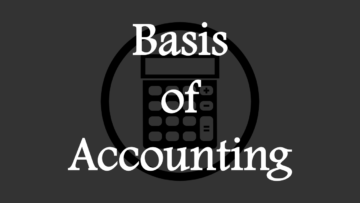All economic transactions taking place in business have to go through the accounting process because only by doing this the performance and status of the business can be ascertained. One process in the accounting process is that of classification, in this process the concept of ledger is applied. Once the transactions have been identified, measured, and recorded, the next step is to classify the recorded transactions. In this process, all the related transactions are recorded at one place in one account called a ledger account.
Ledger account is used to systematically record and manage transactions as it applies the concept of ledger. Journal helps in recording the transactions as per the rules and the ledger helps in classifying the transactions recorded through journal into the respective group or account. Only with the help of ledger account, we can know when and which transaction has taken place in any account. In this, all the related transactions occurring during a certain period are recorded in the respective accounts.
Note: due to increasing technology, manual work is decreasing.

Table of Contents
What is Ledger?
Meaning of Ledger
Ledger is a concept of classifying transactions in accounting, and it is a part of the most important concept in accounting. The accounting process cannot be completed without ledger because the classification process of accounting is done through ledger. Under this, different groups are created according to the nature of the transaction, and all the related transactions are recorded in related group which is called a ledger account. The book in which ledger accounts are maintained is called ledger book.
Ledger is also known as a final entry because after this the transactions are not recorded, reports are prepared with the help of only the recorded transactions. Due to double entry system, every account in the ledger has a debit side and a credit side and due to the rule of debit and credit, all the accounts are divided according to the traditional approach or modern approach. With the help of journal, most of the burden of ledger is already reduced, due to which it becomes easier to pass entries in it.
Definition of Ledger
According to V.G. Vickery – “Ledger is a book of account which contains in a suitably classified form, the final and permanent record of trader’s transactions”.
According to William Pickles – “A Ledger is a most important book of account and is the destination of the entries made in the subsidiary books.”
According to Fieldhouse Arther – “Ledger is the permanent storehouse of all the transactions.”
According to L.C. Cropper – “The book which contains a classified and permanent record of all the transactions of a business is called the ledger.”
Features of Ledger
Following are the features of ledger:
1. Concept:
Ledger is a concept of classifying transactions in accounting. It plays a very important role in recording and managing transactions. After recording the transactions through the concept of journal, the transactions are classified through the concept of ledger. Transactions in the ledger are managed by classifying them into different groups or account.
2. Rule:
Rules are applied in the ledger due to which all the credit entries of the journal entry are recorded with “To” on the debit side of the ledger account and all the debit entries of the journal entry are recorded with “By” on the credit side of the ledger account. “To” indicates which account has debited this account and “By” indicates which account has credited this account.
3. Double entry system:
Double entry system means debit and credit. According to this, every transaction has debit and credit sides. If an account is debited then there is also a debtor who is on the credit side, similarly, if an account is credited then there is also a creditor who is on the debit side. The credit entry of the journal entry is recorded on the debit side of the ledger account of whichever account is debited, similarly, the debit entry of the journal entry is recorded on the credit side of the ledger account of whichever account is credited.
4. Systematic:
The concept of ledger is systematic as it provides a systematic way of classifying and managing the transactions done through the concept of a journal. All the transactions recorded in it are recorded in chronological order. There are also many other rules to be followed while recording transactions like recording correct transactions on the debit and credit side, recording transactions on the debit side with “To” and transactions on the credit side with “By”, etc.
Read Also:
QNA/FAQ
Q1. What is ledger?
Ans: Ledger is a concept of classifying transactions in accounting, and it is a part of the most important concept in accounting.
Q2. Is the ledger account divided into two parts?
Ans: Yes, the ledger account is divided into two parts, one debit and the other credit.
Q3. Is ledger used after journal?
Ans: Yes, ledger is used after journal because it requires journal entries.
Q4. Is ledger part of the most important concepts in accounting?
Ans: Yes, ledger is part of the most important concepts in accounting because without it the accounting process is not complete.
Q5. Write the features of ledger.
Ans: Following are the features of ledger.
1. Ledger is a concept of classifying transactions.
2. Rules are applicable in ledger, or the ledger contains rules.
3. The rule of double entry system applies in the ledger.
4. The concept of ledger is systematic.













